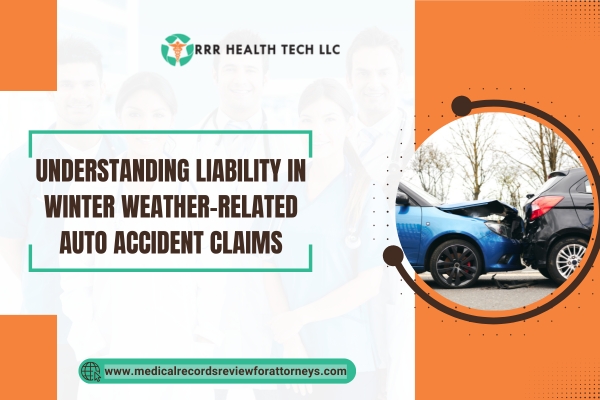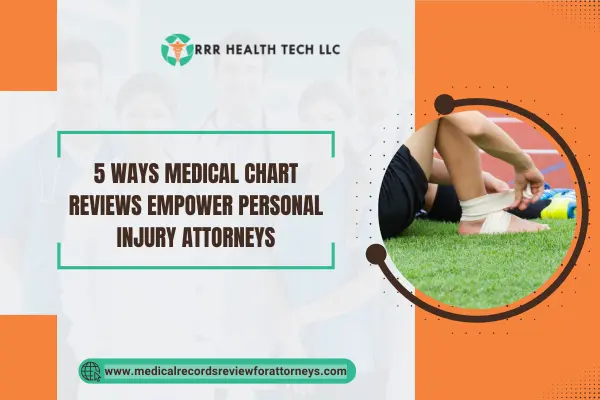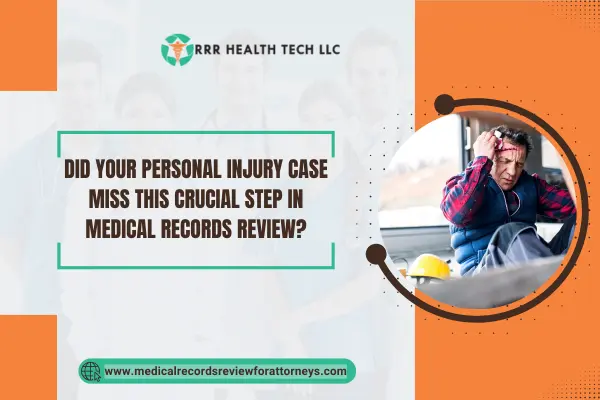
Introduction
Driving in winter conditions is complex and often associated with a high number of automobile accidents. These accidents create intricate questions regarding liability. For attorneys representing such clients, it is necessary to appreciate the intricacies of liability when these conditions prevail. The following article looks into the factors determining responsibility in auto accidents that happen during winter weather, describes how medical record reviews help in such cases, and gives recommendations to attorneys.
The Impact of Winter Weather on Driving Conditions
Overview of Winter Weather Effects
Winterization has the potential to substantially modify the driving environment and render the roads unsafe because of snow accumulation, the presence of ice, and the obstruction of vision. This describes such conditions which will be critical in informing liability.
Types of Winter Weather Conditions
- Snow Coverage – Under circumstances of heavy snow coverage, road signs and road markings are likely to be covered.
- Ice Coverage – Black ice is more hazardous particularly because it is not visible.
- Visually Impaired – Fog, ice, and snow as well as rain will tend to lessen a driver’s ability to see other vehicles and obstacles on the road.
Statistics on Winter Weather Accidents
As reported by the National Highway Traffic Safety Administration, many people die and get injured every year due to the effect of winter-related weather on the highways in America. On average, more than 1,300 deaths and over 116,800 injuries occur every year as a result of winter weathers’ effects on the drivers in the United States. This data can be useful for attorneys in estimating the extent of winter weather related accidents.
Determining Liability in Winter Weather Accidents
Legal Framework for Liability
In a typical regard, automobile accidents tend to follow the doctrine of negligence, which in simple terms means that the law’s requirement of care was breached by a particular party. In such conditions of winter more often than sometimes, the factors mentioning this characteristic may become all elusive.
Key Factors Influencing Liability
- Driver Behavior: Was the operational conduct of the driver in line with the weather conditions at that particular time?
- Road Maintenance: Were the roads properly kept by the relevant bodies?
- Tire Requirements: Did the automobile have proper winter tires or chains fitted on it?
Common Legal Defenses in Winter Weather Cases
- Act of God: In this defense, the posture or argument of the defendants is that the event that caused the accident was a natural occurrence that could not have been controlled or prevented.
- Comparative Negligence: Clause such as comparative negligence can also accompany some states where if a party of the injured portion is also to blame even slightly; their compensation can be reduced accordingly.
The Role of Medical Records Review in Winter Weather Accident Cases
Importance of Medical Records in Liability Cases
Injuries sustained during an accident are essential in ascertaining personal injury claims, and medical records serve as great support for such claims. For lawyers, a careful analysis of these records can prove fruitful for advancing the claims in question.
How We Assist Attorneys
- Comprehensive Review: We meticulously analyze medical records to identify relevant information that supports liability claims.
- Expert Testimony: Our team can provide expert testimony regarding the medical implications of injuries sustained in winter weather accidents.
Case Study 1: Slip and Fall Due to Icy Conditions
Overview of the Case
A pedestrian slipped on an icy sidewalk outside a store, suffering a broken leg.
Challenges
One key concern was how far reasonable precautions should have been taken by the store owner to remove the ice.
Solutions
We were able to show the degree of injuries, to their source, through a comprehensive medical records review, thereby demonstrating how restitution was justified.
Compensation
The plaintiff was awarded in settlement payment aimed towards covering medical bills and earnings lost.
Case Study 2: Multi-Vehicle Collision on Icy Highway
Overview of the Case
A multi-vehicle crash was observed on one of the soughing roads where concentration of vehicles was high and resulted in several casualties and injuries.
Challenges
The case became complicated when ascertaining which of the numerous drivers was at fault was required.
Solutions
In the course of reviewing the medical records, we were able to prove the injuries of all the parties in such a way that encouraged attorneys to advance the case of comparative negligence.
Compensation
Victims received compensation for medical bills, rehabilitation costs, and pain and suffering.
Conclusion
In the course of their profession, it is important for the lawyers to appreciate the aspect of liability in the context of winter weather associated auto accident cases. In the review of their medical records, lawyers may strengthen their cases so as to ensure their clients obtain the required compensation. As winter nears, the wintery mix adds another layer of complexity to the understanding of the accidents that occur due to these conditions.


